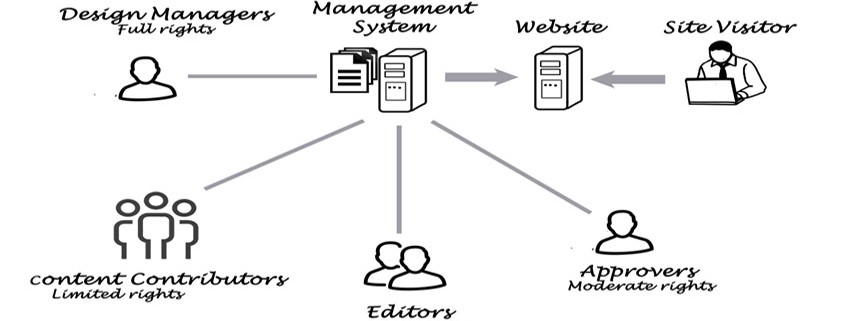
Content Management Systems Defined (CMS)
A content management system (CMS) is a web application that is developed to allow the website owner (or appointed admins) to manage, update and publish content easily.
An increasing number of websites are being built with CMS back-ends supported by powerful relational databases. As mentioned earlier in this article, these may serve (often huge) ecommerce retail outlets like Amazon with tens of thousands or millions of product lines or may populate a few specific pages of a small business site – with a variety of applications, delivery mechanisms and site sizes in between.
There are now hundreds of off-the-shelf CMS’ on the market, some centrally served (meaning the website must be hosted on the vendor’s server), others available for indiscriminate hosting, and many available as dedicated applications configurable by the end-developer to better approximate business needs. Each have their strengths and weaknesses and may range in price from a few hundred dollars to millions of pounds for a corporate installation and wide license.
The more configurable and better equipped CMS’ will incorporate a development language (or many) which permits functional extensibility but the price for such may be prohibitive to smaller website initiatives.
Code & language
Static websites rarely employ server-side scripting like ASP unless it be to output a specific page – like for instance a mortgage application or other form requiring user input, validation and processing – but are based on hard-coded markup, HTML (HyperText Markup Language) or XHTML (eXtensible HTML) which may incorporate JavaScript client-side scripts – code which is interpreted by the browser.
Using ASP or similar server-side scripting to generate web pages on-the-fly at the server is regarded as a better solution than utilising client-side browser interpreted code such as JavaScript for feeding dynamic pages, especially when security or strict validation of user input is a prime requirement simply because JavaScript or similar local features are easily disabled by users, in many instances rendering a website or critical section unusable.
